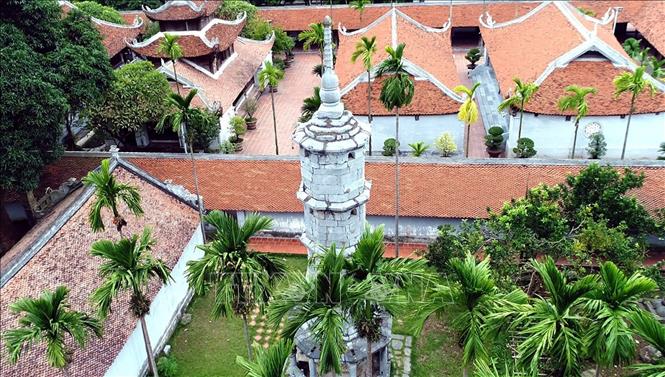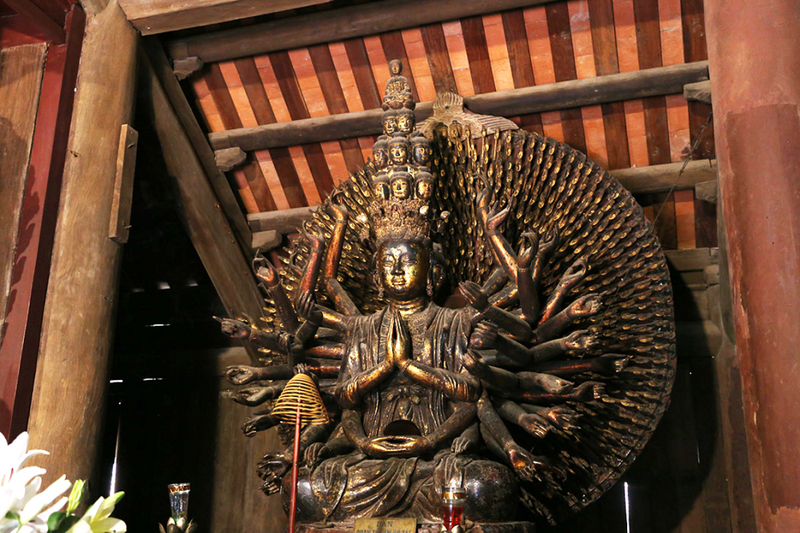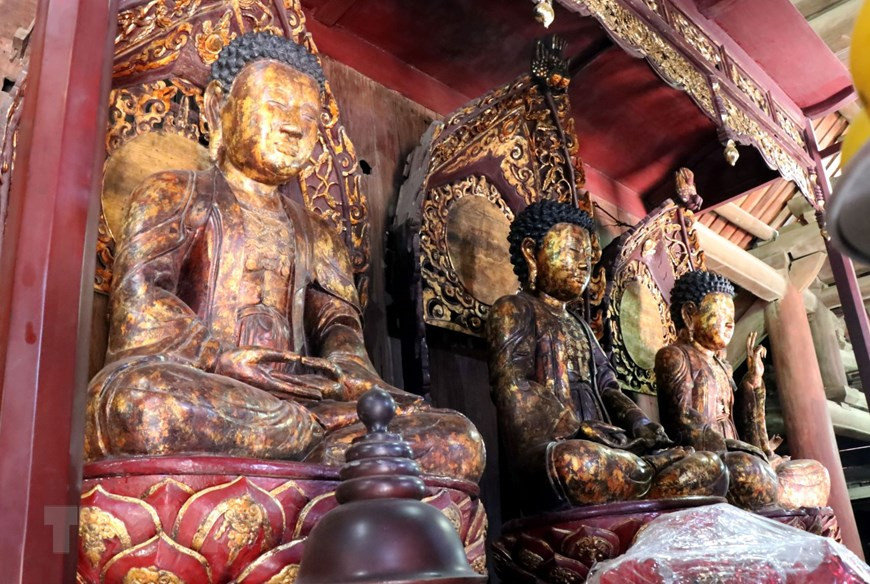But Thap Pagoda
1. Overview
But Thap Pagoda (Vietnamese: Chùa Bút Tháp) is one of the most renowned and artistically significant Buddhist temples in Vietnam. It is located in Dinh To Commune, Thuan Thanh District, Bac Ninh Province, near the southern bank of the Duong River.
Famous for its unique architecture and exquisite wood carvings, But Thap Pagoda is considered a museum of Vietnamese Buddhist art from the 17th century and a symbol of northern Vietnam’s religious and cultural heritage.
2. Historical Background
-
The pagoda was originally built in the 13th century, but it was significantly restored and expanded during the 17th century under the patronage of Queen Mother Trinh Thi Ngoc Truc and the guidance of Zen Master Chuyet Chuyet, a highly respected monk from China.
-
The pagoda flourished during the Later Le Dynasty (Lê Trung Hưng), a time when Buddhism experienced great revival in Vietnam.
-
The name “But Thap” (meaning “Pen Tower”) comes from the stone stupa shaped like a pen, located within the temple grounds.
3. Architectural Features
But Thap Pagoda is famous for its harmonious layout and artistic elegance, combining simplicity with spiritual depth.
-
Traditional Vietnamese Architecture:
The pagoda complex includes over 10 buildings arranged in a straight line from front to back, such as the three-entrance gate, bell tower, main hall, ancestral house, and back hall. The curved roofs and wooden columns reflect classical Vietnamese design. -
Quan Am (Avalokiteshvara) Statue:
One of the most celebrated treasures of the pagoda is the statue of the Thousand-Armed and Thousand-Eyed Avalokiteshvara Bodhisattva (Phật Bà Quan Âm nghìn mắt nghìn tay). This wooden sculpture is the largest of its kind in Vietnam, with extraordinary detail and craftsmanship. -
But Thap Tower (Pen Stupa):
A unique stone stupa built in the shape of a pen, which gives the pagoda its name. It stands as a symbol of wisdom and learning. -
Delicate Wood and Stone Carvings:
The intricate carvings on doors, beams, altars, and statues depict scenes from Buddhist scriptures, daily life, flowers, animals, and mythical creatures.
4. Cultural and Religious Significance
-
But Thap Pagoda is not only a place of worship but also an important site for scholars and art lovers.
-
It reflects the golden age of Vietnamese Buddhist sculpture and architecture, showcasing the integration of religion, art, and culture.
-
The pagoda has been recognized as a Special National Historical and Cultural Relic by the Vietnamese government.
5. Visiting Information
-
Location: Dinh To Commune, Thuan Thanh District, Bac Ninh Province (about 30 km from Hanoi).
-
Opening hours: Daily, typically from 7:00 AM to 5:00 PM.
-
Best time to visit: During spring (January–March) when the weather is pleasant and festivals are held.
-
Tips: Wear modest clothing, be respectful when taking photos, and take time to observe the detailed carvings and statues.
Conclusion
But Thap Pagoda is a masterpiece of Vietnamese spiritual and artistic heritage. With its ancient architecture, sacred atmosphere, and breathtaking sculptures, it offers visitors a deep insight into the soul of Vietnamese Buddhism. A visit to But Thap is not only a journey of faith but also a discovery of timeless beauty and cultural richness.




